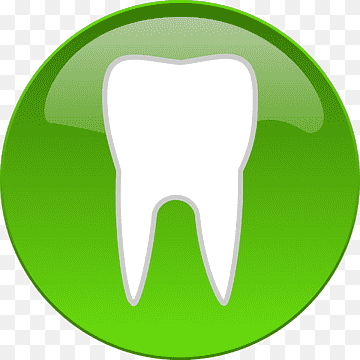Periodontitis, a severe form of gum disease, affects millions of people worldwide. It can lead to tooth loss and even increase the risk of heart disease and other systemic conditions. However, the good news is that periodontitis is preventable. In this article, we will explore the causes, symptoms, and diagnosis of periodontitis, as well as effective treatment methods and practices. Additionally, we will discuss essential tips and strategies to help you maintain optimal oral health and prevent the onset of periodontitis. By understanding the importance of prevention and implementing these recommendations, you can safeguard your teeth and gums, ensuring a lifetime of healthy smiles.
1. "Understanding Periodontitis: Causes, Symptoms, and Diagnosis"
Periodontitis, also known as gum disease, is a prevalent oral health condition that affects millions of people worldwide. It is a chronic inflammatory disease that affects the gums and the supporting structures of the teeth. If left untreated, periodontitis can lead to tooth loss and have adverse effects on overall health. Therefore, understanding the causes, symptoms, and diagnosis of periodontitis is crucial for its prevention and early intervention.
Causes:
Periodontitis primarily develops due to poor oral hygiene habits. When plaque, a sticky film of bacteria, builds up on the teeth and gums, it can lead to an infection. Bacteria in the plaque release toxins that irritate the gum tissues, causing inflammation. Over time, this inflammation can progress, leading to the destruction of the supporting tissues and bone surrounding the teeth. Other factors that contribute to the development of periodontitis include smoking, genetics, hormonal changes, certain medications, and underlying medical conditions like diabetes.
Symptoms:
The early stage of periodontitis, known as gingivitis, often presents with mild symptoms such as red, swollen, and bleeding gums. As the disease progresses, symptoms become more pronounced. Patients may experience persistent bad breath, receding gums, loose or shifting teeth, changes in bite alignment, and the formation of deep pockets between the gums and teeth. These symptoms are indications of the infection spreading and should not be ignored.
Diagnosis:
Diagnosing periodontitis is typically done by a dentist or a periodontist, a specialist in gum health. During a dental examination, the oral health professional will assess the patient's medical history, conduct a visual inspection of the gums,
2. "Preventing Periodontitis: Effective Treatment Methods and Practices"
Preventing Periodontitis: Effective Treatment Methods and Practices
Periodontitis, a severe form of gum disease, can lead to tooth loss and other oral health complications if left untreated. However, with proper diagnosis, timely treatment, and adopting preventive measures, periodontitis can be effectively managed and even prevented. In this section, we will explore some of the most effective treatment methods and practices to prevent the onset and progression of periodontitis.
One of the key aspects of preventing periodontitis is maintaining good oral hygiene. Regular brushing and flossing are essential to remove plaque and bacteria from the teeth and gum line. Dentists often recommend brushing at least twice a day with a soft-bristled toothbrush and using dental floss or interdental brushes to clean between the teeth. Additionally, incorporating an antimicrobial mouthwash into your daily oral care routine can help control bacterial growth, reducing the risk of periodontitis.
Another crucial step in preventing periodontitis is scheduling regular dental check-ups. Dentists can detect early signs of gum disease during routine examinations and provide necessary treatment or guidance on preventive measures. Professional dental cleanings, also known as scaling and root planing, are typically recommended every six months to remove tartar buildup and prevent the progression of periodontitis.
For individuals with a higher risk of periodontitis, such as those with a family history of gum disease or certain medical conditions like diabetes, more frequent dental visits may be necessary. These individuals may also benefit from additional preventive measures, such as the use of antimicrobial mouth rinses or prescription-strength toothpaste.
In some cases, more advanced treatment methods may be required
3. "Maintaining Oral Health: Tips and Strategies to Prevent Periodontitis"
Maintaining Oral Health: Tips and Strategies to Prevent Periodontitis
Periodontitis, a severe gum infection that damages the soft tissues and destroys the bone supporting your teeth, can lead to tooth loss if left untreated. However, with proper oral care and preventive measures, you can significantly reduce the risk of developing this condition. Here are some tips and strategies to help you maintain optimal oral health and prevent periodontitis.
1. Practice good oral hygiene: The foundation of preventing periodontitis lies in maintaining a proper oral hygiene routine. Brush your teeth at least twice a day using a soft-bristled toothbrush and fluoride toothpaste. Ensure you brush all surfaces of your teeth, including the gum line, for at least two minutes. Don't forget to replace your toothbrush every three to four months or as soon as the bristles become frayed.
2. Floss regularly: Brushing alone cannot reach the tight spaces between your teeth and along the gum line. Flossing helps remove plaque and food particles from these areas, preventing the buildup of bacteria that can lead to periodontitis. Make it a habit to floss at least once a day, using a gentle back-and-forth motion. If you find traditional floss challenging to use, consider alternatives such as interdental brushes, water flossers, or floss picks.
3. Use antimicrobial mouthwash: Adding an antimicrobial mouthwash to your oral care routine can help reduce the bacteria in your mouth, especially those that cause gum disease. Look for a mouthwash that contains ingredients like chlorhexidine or essential oils like tea tree oil. Rinse your mouth with

